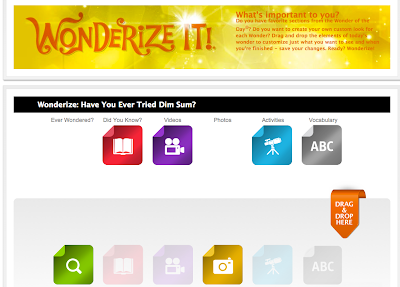In a previous blog post, I shared past
Wonders that would be great to use throughout the year. One of those Wonders I listed to use in building community at the beginning of the year was,
#681 What's in a Name. I used this Wonder along with two favorite books during the first week of school. When sharing the Wonder, we talked about how we got our names, whether we liked our names and that often times names having meaning. Some students knew how they got their names and what they meant, while others didn't. Those that didn't, I encouraged to go home and ask why they were given their name and what it meant.

Later in the day to connect with the Wonder, I shared the book,
The Name Jar by Yangsook Choi. This is a book I have with previous classes early in the year to talk about differences in students. The story is about a young girl from Korea named, Unhei (which means, grace) On her first day of school, her teacher asked her what her name was. After thinking about being teased on the school bus, she tells the teacher she hasn't chosen one yet. All of the children in her class are glad to share possible American names in her Name Jar. After making friends with a boy named, Joey and with a little help from Mr. Kim (the owner of the Korean food store), she decides to keep her own Korean name.

Another book that I shared later in the week was,
My Name is Yoon by Helen Recorvits. This story is about another little girl from Korea, named Yoon. Here name means, Shining Wisdom. Yoon does not like how her name looks in english, so she refuses to print it when her teacher asks her to. Instead, she writes CAT, BIRD and CUPCAKE. Finally, after meeting a new friend on the playground and her teacher giving her the eyes that said, "I-like-this-girl-Yoon," Yoon decides that she will print her name in English.
While both books are excellent to share by themselves during the first few weeks of school to discuss differences, teasing, filling left out and including others, they fit perfectly with Wonder #681 to encourage children to think about their own names.
After the fact, I thought about having students interview their parents to find out how they got their name and research what their name means, including the origin. This would be a great first homework assignment and a way to get to know the students in my class better.



























